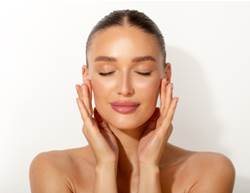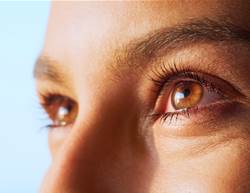The beauty industry can be a sea of confusing acronyms, with cosmetic companies dazzling us with science. It’s enough to make you want to bury your head in the sand, ignore new products, and rely on the same routine you’ve always had. But as your skin ages and changes, so does what it needs and it’s worth investigating what’s fresh on the market. One favourite that is seen almost everywhere these days has the acronym AHA, alpha-hydroxy acids. They’re one of the most prevalent and interesting ingredients found in a multitude of cosmetics and worth getting to know.
What are they?
Alpha hydroxy acids, more commonly known as AHAs, are a group of water-soluble gentle acids. They can be synthetic or naturally occurring and derived from plant or fruit sugars – such as glycolic acid (from sugar cane), lactic acid (from milk), citric acid (from citrus), mandelic acid (from almonds), malic acid (from apples) and tartaric acid (from grapes). They are most popular for their exfoliating and moisturising effects and can be found in over-the-counter products, which contain a lower level, and in chemical peels at spas and dermatologists’ offices, which contain higher levels.
How do they work?
This is where it gets a bit tricky, as they work in different ways on the different sections of skin. Dr Michelle Hunt of Inner Sydney Dermatology explains, “The exact mechanism of action is not completely understood, and AHAs appear to work in different ways at the various skin layers. At the epidermis, they cause ‘ungluing’ of cells, resulting in the shedding of dead skin cells. This makes the skin appear smoother and more even in colour and helps prevent blocking of pores. AHAs also stimulate the production of new skin cells, accelerating the emergence of younger, healthier-looking cells at the skin surface. AHAs also act on the deeper layers of skin to stimulate the production of new collagen, thus reducing fine lines and wrinkles.” Different AHAs can have different abilities, for example lactic acid helps to enhance skin hydration.
Are they risky?
Generally, they’re well-tolerated and are used to target a wide range of skin concerns: acne, uneven tone, pigmentation, and improving the appearance of photo-damaged skin and fine lines. For those with sensitive skin or rosacea, AHAs can cause stinging, irritation and redness but don’t be scared off. Dr Hunt recommends starting with “A low strength AHA and slowly increasing the frequency of application and strength. Alternatively, try a polylactic acid (such as lactobionic acid) instead. Although they are not quite as effective, they are less irritating for sensitive skins.”
The one crucial thing to remember when using products that contain AHAs is to also wear sunscreen. AHAs can increase sensitivity to light and while this only occurs while using the products, it’s recommended to continue using sunscreen for at least a week after discontinuing products or treatments.
It’s also worth taking a closer look at your sunscreen, as dermatologist Dr Michelle Rodrigues, spokesperson for the Australasian College of Dermatologist, says you need to make sure it has a high UVA and UVB protection. “The SPF factor tells us how much UVB is blocked but it doesn’t necessarily tell you how much UVA is blocked. You really need to look at the product to see if it has a high UVA protection or not on the packaging.”
What to look for?
Check products have an AHA concentration of 4-10 per cent. While at least an 8 per cent strength is recommended to treat photo-aged skin, Dr Hunt explains, “Concentrations above 10 per cent or at a low pH (< 3.5) are more likely to cause increased skin irritation. Higher-strength AHAs (often used as chemical peels) should only be used under medical supervision.”
At what age do we need them?
AHAs cover a gamut of skin problems from helping those with breakouts to smoothing fine lines and brightening complexions. Dr Hunt recommends women from the age of 20 to start introducing AHA- containing products into their routine to protect against breakouts and for their anti-ageing effect. She also says they’re important for women over 40, who show the signs of photo-ageing, dull, dry skin, fine lines and wrinkles, and blotchy pigmentation, as “AHAs can help reverse these signs, creating more youthful-looking skin.”










